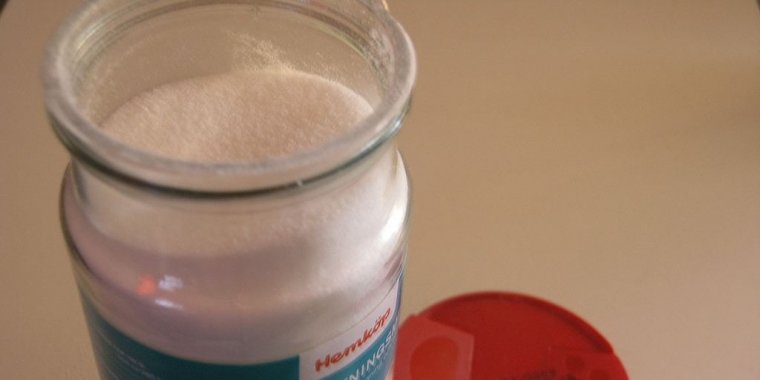| News / Science News |
Not enough scientific evidence linking noncaloric sweeteners with adverse effects on gut microbiota
There is currently not enough evidence related to the effects of noncaloric sweeteners on appetite, short‑term intake, and risk of suffering from cancer or diabetes, as shown by a study.

Sweetener based on aspartame powder. ![]()
Worldwide increase in sugar consumption, especially sucrose or fructose and glucose syrups, has raised concern about its possible adverse effects on human health and the development of chronic diseases such as metabolic syndrome, cardiovascular diseases, and type 2 diabetes. So much so that institutions such as the World Health Organization (WHO) have recommended a reduction in the consumption of these free sugars.
Thus, sweeteners may substitute sugar because they mimic its sweet taste but have a negligible impact on daily energy intake and are frequently sweeter than sucrose.
The main goal of this review has been to critically discuss the evidence supporting the effects of nonnutritive sweeteners (NNSs), both synthetic sweeteners (acesulfame K, aspartame, cyclamate, saccharin, neotame, advantame, and sucralose) and natural sweeteners (NSs; thaumatin, steviol glucosides, monellin, neohesperidin dihydrochalcone, and glycyrrhizin) and nutritive low‑calorie sweeteners (polyols or sugar alcohols) on the composition of microbiota in the human gut.
One of the main discoveries is that the only nonnutritive and noncaloric sweeteners that significantly alter microbiota are saccharin and sucralose, although their impact on human health is unknown and further research should be carried out in order to confirm said alteration. The same could be said about steviol glucosides, although only for intakes greater than the ADI (Acceptable Daily Intake).
In this sense, sweeteners based on amino acid derivatives don’t exert great changes on gut microbiota due to their low concentration and because those amino acids are absorbed by the duodenum and the ileum.
With respect to polyol sweeteners (such as isomaltose, maltitol, lactitol, and xylitol), which are poorly absorbed or even not absorbed at all, they may have prebiotic actions and can reach the large bowel and increase the numbers of bifidobacteria in animals and humans.
Noncaloric sweeteners, like the rest of alimentary additives, are subject to a strict safety control carried out by the European Food Safety Authority (EFSA), the U S Food and Drug Administration (FDA), and other international institutions such as the Joint FAO/WHO Expert Committee on Food Additives (JECFA) and the International Agency for Research on Cancer (IARC).
The use of sweeteners, which are subject to strict controls by these organizations, is safe as long as they are consumed within the Acceptable Daily Intake. (University of Granada)
YOU MAY ALSO LIKE



